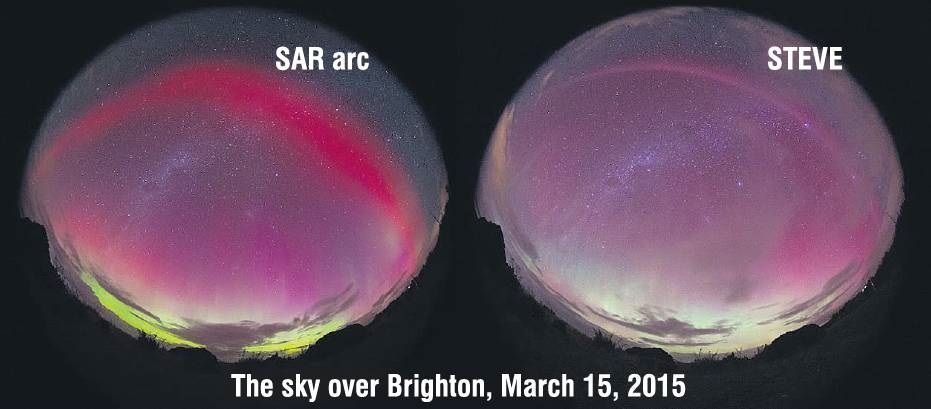

I was not disappointed.
Unfortunately, clouds covered the Otago Peninsula. With darkness falling I sped south, gaining a speeding ticket en route from a somewhat aurora sceptic traffic policeman for my troubles.
I eventually found clear sky near Brighton. Even before my eyes adjusted to the darkness, I could see that the southern horizon was ablaze with bright colourful auroral beams.
I set up my cameras, gasping in awe at the beautiful aurora to the south. Glancing upwards I noticed something weird going on overhead. The sky was red. ‘‘That’s not normal’’ I thought to myself. I attached a wide angle ‘‘fish-eye’’ lens and initiated a sequence of photographs with a second camera.
Unbeknown to me back in 2015, that series of images recorded something that had never been seen before. It led, last week, seven years after the event, to a publication in the august scientific journal Geophysical Research Letters with me as the second author.
The paper’s title, ‘‘Rainbow of the Night: First Direct Observation of a SAR arc evolving into STEVE’’ is a reference to the name given to the aurora by Kai Tahu: Nga Kahukura o Hine Nui te Po (Rainbow of the Goddess of the Night).
My pictures captured the evolution of a broad red arc, known to researchers as a Stable Auroral Red (SAR) arc into a thin white-mauve arc, otherwise known as Strong Thermal Emission Velocity Enhancement (STEVE).
Although these two arcs may resemble aurora, they are not produced by the same physical process. It turns out that current theories and models are unable to reproduce or explain these observations.
The moral of this story is: be curious and keep looking up. You never know when you will find something new.












